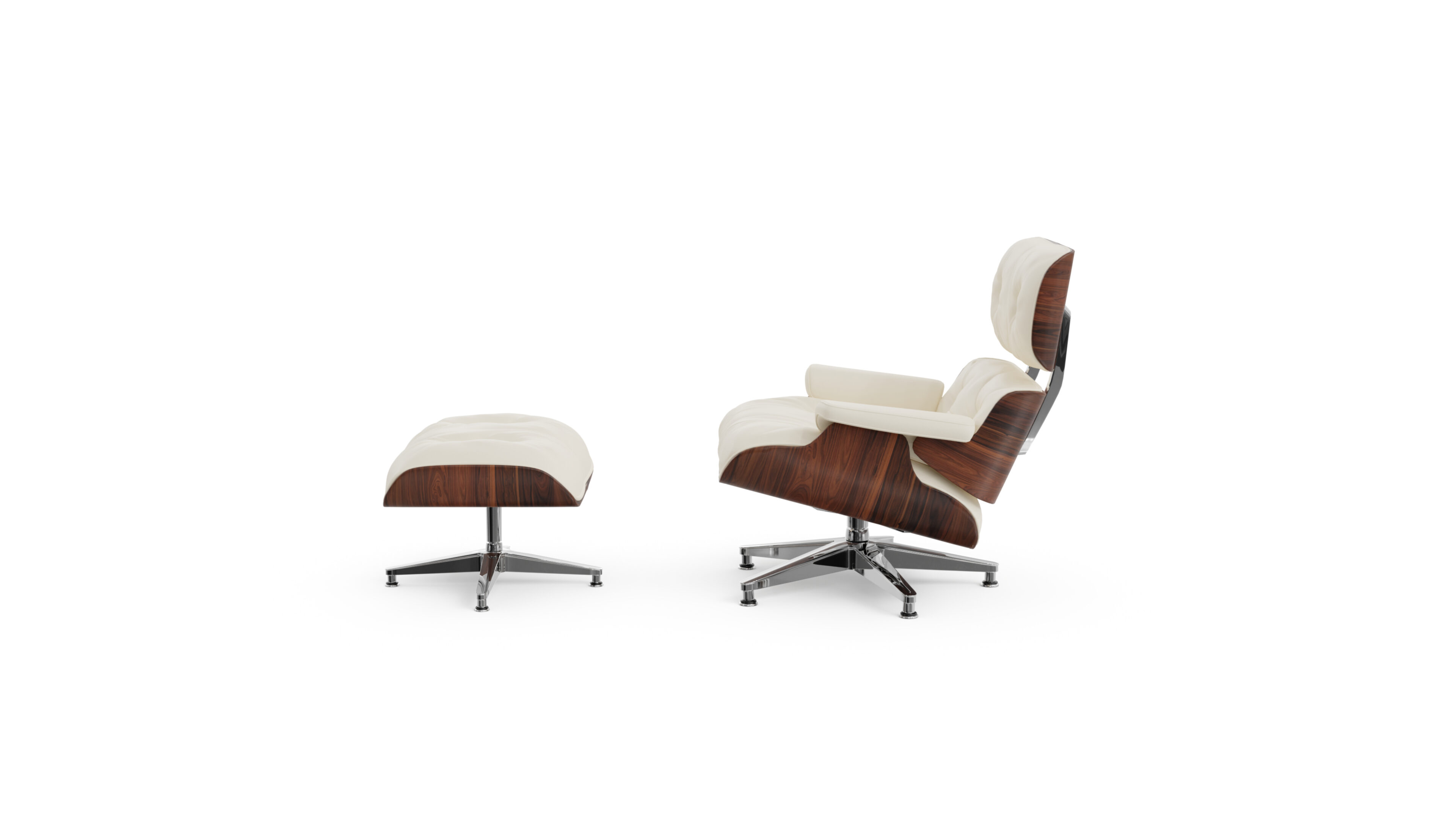
Phillippe Starck Biography
Philippe Starck (b. 1949) is a French designer renowned for his wide-ranging work across architecture, furniture, and product design. He began his career in the 1980s, quickly gaining recognition for his innovative and often playful approach. Starck’s furniture designs include the iconic Louis Ghost Chair (2002), the Costes Chair (1984), and the Privé series seating system (2007), which features modular elements allowing for customizable configurations of arrangements, backrests, and integrated tables. Starck’s architectural projects include the Asahi Beer Hall in Tokyo and the YOO residential developments worldwide. His work is characterized by a blend of wit, elegance, and a commitment to democratizing design.
Early Life and Education
Born in 1949 in Paris, France, Philippe Starck grew up surrounded by the influence of design. His father was an aeronautical engineer and inventor, which likely contributed to Starck’s innovative approach to design. Starck studied at the École Camondo in Paris, but he has often stated that his real education came from his own curiosity and experiences. From an early age, he showed a keen interest in design and a desire to challenge conventional thinking.
Career and Achievements
Starck’s career took off in the 1980s when he gained international recognition for his interior design of the private apartments of French President François Mitterrand at the Élysée Palace. This high-profile project catapulted him into the spotlight and set the stage for a prolific career that would span decades and multiple design disciplines.
In furniture design, Starck has created numerous iconic pieces. The Costes Chair (1984), designed for the Café Costes in Paris, marked his entry into furniture design and remains a classic. The Louis Ghost Chair (2002), a transparent polycarbonate chair that reimagines the classic Louis XVI armchair, has become one of his most recognizable designs. The Privé series (2007) showcases his ability to create modular, customizable furniture systems that adapt to various spaces and needs.
Starck’s architectural projects are equally noteworthy. The Asahi Beer Hall in Tokyo (1989), with its distinctive golden flame-like structure atop a dark building, has become a landmark of the city. His work on the YOO residential developments, a collaboration with property entrepreneur John Hitchcox, has brought his design aesthetic to luxury residences worldwide.
Beyond furniture and architecture, Starck has made significant contributions to product design. His lemon squeezer for Alessi, the “Juicy Salif” (1990), is considered an icon of industrial design, despite controversies about its functionality. He has designed everything from toothbrushes to motorcycles, always with his characteristic blend of functionality and whimsy.
Signature Designs
Philippe Starck’s portfolio is vast and diverse, spanning multiple design disciplines. Some of his most notable works include:
1. Louis Ghost Chair (2002): A transparent polycarbonate chair that reimagines the classic Louis XVI armchair.
2. Costes Chair (1984): Designed for Café Costes in Paris, this chair helped launch Starck’s career in furniture design.
3. Privé Series (2007): A modular seating system offering customizable configurations.
4. Juicy Salif (1990): An iconic, if controversial, lemon squeezer designed for Alessi.
5. Asahi Beer Hall (1989): A landmark building in Tokyo featuring a distinctive golden flame-like structure.
Design Philosophy and Approach
Starck’s design philosophy is characterized by several key principles. First and foremost is his commitment to “democratic design” – the idea that good design should be accessible to everyone, not just the wealthy elite. This philosophy has led him to collaborate with mass-market retailers and create affordable versions of luxury items.
Another key aspect of Starck’s approach is his emphasis on functionality combined with wit and playfulness. He often incorporates unexpected elements or humorous touches into his designs, believing that design should not only be useful but also bring joy and spark conversation.
Starck is also known for his interest in ecology and sustainability. He has been an early advocate for what he calls “democratic ecology,” creating products that are environmentally friendly and energy-efficient while remaining affordable and attractive.
In his creative process, Starck often speaks of working intuitively and quickly, believing that the first idea is often the best. He values simplicity and seeks to strip designs down to their essential elements, often resulting in pieces that are both minimalist and striking.
Legacy and Influence
Philippe Starck’s influence on contemporary design is profound and far-reaching. His work has helped to break down barriers between different design disciplines and between “high” and “low” design. By bringing his distinctive aesthetic to mass-market products, he has played a significant role in democratizing design and making it more accessible to a wider audience.
Starck’s playful and often provocative approach has challenged conventional thinking about what design can and should be. His ability to create objects that are both functional and conversation pieces has inspired many designers to think beyond pure utility and consider the emotional and social aspects of design.
In the field of furniture design, Starck’s innovative use of materials, particularly plastics, has opened up new possibilities for form and function. His modular designs, like the Privé series, have influenced how we think about adaptable, customizable furniture for modern living spaces.
Starck’s commitment to sustainability and “democratic ecology” has also been influential, encouraging other designers and manufacturers to consider the environmental impact of their work. His approach demonstrates that eco-friendly design can be stylish, functional, and accessible.
Today, Starck continues to be a prolific and influential figure in the design world. His work spans an incredibly wide range of products and spaces, from furniture and lighting to hotels and yachts. He has received numerous awards and honors throughout his career, and his designs are featured in permanent collections of museums worldwide.
Philippe Starck FAQs
What is Philippe Starck best known for?
Philippe Starck is best known for his wide-ranging work in design, including iconic furniture pieces like the Louis Ghost Chair, architectural projects like the Asahi Beer Hall in Tokyo, and product designs like the Juicy Salif lemon squeezer. He’s renowned for his innovative, often playful approach and his commitment to “democratic design.”
What is the Louis Ghost Chair?
The Louis Ghost Chair, designed in 2002, is one of Starck’s most famous creations. It’s a transparent polycarbonate chair that reimagines the classic Louis XVI armchair, blending historical reference with modern materials and manufacturing techniques.
What is Starck’s approach to design?
Starck’s approach to design is characterized by a commitment to “democratic design” (making good design accessible to everyone), a blend of functionality and playfulness, and an interest in ecology and sustainability. He often works intuitively and values simplicity in his designs.
What is the Privé series?
The Privé series, introduced in 2007, is a modular seating system designed by Starck. It features customizable elements that allow for various configurations of arrangements, backrests, and integrated tables, showcasing Starck’s interest in flexible, adaptable furniture design.




























